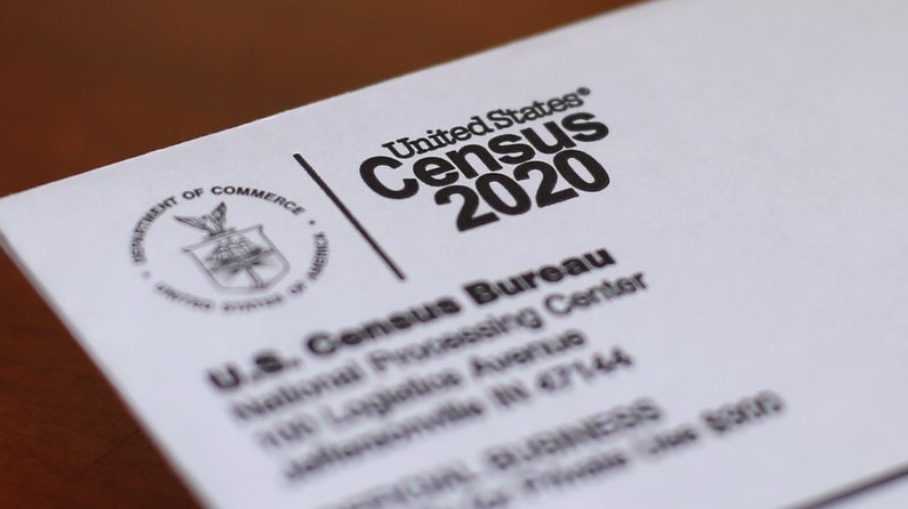
If you’re a census slacker and haven’t yet filled out the form for the 2020 head count, the federal government is trying another way to get in touch with you.
Starting Wednesday, the U.S. Census Bureau is mailing out paper forms to 65.6 million homes whose residents haven’t yet answered the once-a-decade questionnaire.
Most U.S. residents started getting notices about a month ago that they could respond online or by phone.
But about 20% of households automatically received a paper questionnaire, either because their area lacks consistent internet connectivity or their neighborhood has a high percentage of people over age 65.
Now the rest of the nation, at least those households that haven’t responded, are getting paper questionnaires.
About a month into the start of the 2020 census for most U.S. residents, the self-response rate is approaching half of all households, with most responding online. Minnesota, Wisconsin, Michigan, Nebraska, Iowa and Virginia are setting the pace with response rates over 50%.
But in other states — Alaska, West Virginia and New Mexico — only between a quarter and a third of households have responded.
The Census Bureau’s suspension of field operations between mid-March and mid-April due to the spread of the new coronavirus may be affecting response rates.
The suspension included the bureau’s “Update/ Leave” operation in which census takers drop off questionnaire packets in communities where large numbers of homes don’t have regular addresses, receive their mail at P.O. boxes or were hit by a disaster. The lagging states have the largest number of “Update/ Leave” areas in the country, according to the Center for Urban Research at the City University of New York.
“We don’t know definitively why the response rates are so low in places such as West Virginia, etc., but I think it’s safe to say that a major, if not the major, reason they’re so low is because Update/Leave has been suspended,” said Steven Romalewski, director of CUNY Mapping Service at the Center for Urban Research.
That operation covers large numbers of poor rural areas and Indian reservations, which traditionally have been among the hardest communities to count, said Terri Ann Lowenthal, a consultant on census policy.
The further away from last week’s Census Day, the April 1 date people are asked to use on the form when determining where they live, the less accurate the responses tend to be because people’s memories fade, she added.
“The delay in the enumeration of those communities could exacerbate those patterns,” Lowenthal said.
The Census Bureau says the current national response rate is on track for what was expected. Because the 2010 census only used paper forms, and the schedule was more compressed, a side-by-side comparison of response rates from the two decades is flawed. But almost a month into the 2010 census, about two-thirds of households had responded.
The 2020 response rates, so far, vary demographically. As of April 2, neighborhoods whose residents are predominantly white had the highest average rate at 42.5%, according to an analysis from CUNY’s Center for Urban Research.
The analysis found the response rate was 41.8% for predominantly Asian neighborhoods, 35% for predominantly black neighborhoods and 30.5% for predominantly Hispanic neighborhoods.
Besides causing the delay in field operations, the outbreak is keeping advocacy and civic groups from conducting face-to-face outreach, considered the most effective way of encouraging participation.
Some outreach groups are looking to alternative tactics. In the nation’s hardest-hit metro area, NYC Census 2020 — with help from Brooklyn-based arts and media institution BRIC — launched an ad last week that links funding for public services crucial in the crisis, like hospitals and firefighters, to being counted in the census.
The NALEO Educational Fund, a Hispanic advocacy group, is doing a half-million-dollar radio and digital ad buy to encourage participation, and previously planned town hall meetings are going virtual.
“The current environment has caused all of us to dramatically change the approach that we had planned to do,” said Arturo Vargas, CEO of NALEO Educational Fund.
Several advocacy groups and think tanks are calling for the Census Bureau to extend the deadline for wrapping up the count — two weeks were added, extending it into mid-August — and even to postpone the Dec. 31 deadline for handing the final population numbers to the president as required by law.
The 2020 census will guide the distribution of some $1.5 trillion in federal spending and help determine how many congressional seats each state gets in a process known as apportionment.
“If necessary, it should be extended. We are in an unprecedented pandemic. People’s health and safety are paramount,” said Marc Morial, president and CEO of the National Urban League, the civil rights group. “It may delay apportionment but better to have an accurate census when we do apportionment than one that is incomplete or half done.”
___
Reprinted with permission from The Associated Press.




2 comments
Thomas Knapp
April 8, 2020 at 8:43 am
I tried to complete the census online, but ran into technical problems doing so.
Specifically, for all questions except the one permitted by the Constitution (“how many people live at this address?”), the online multiple choice setup failed to provide for the correct answer (“none of your business”).
So I had to wait for the paper version.
Cogent Observer
April 8, 2020 at 8:55 am
Yes. None of their business.
Comments are closed.